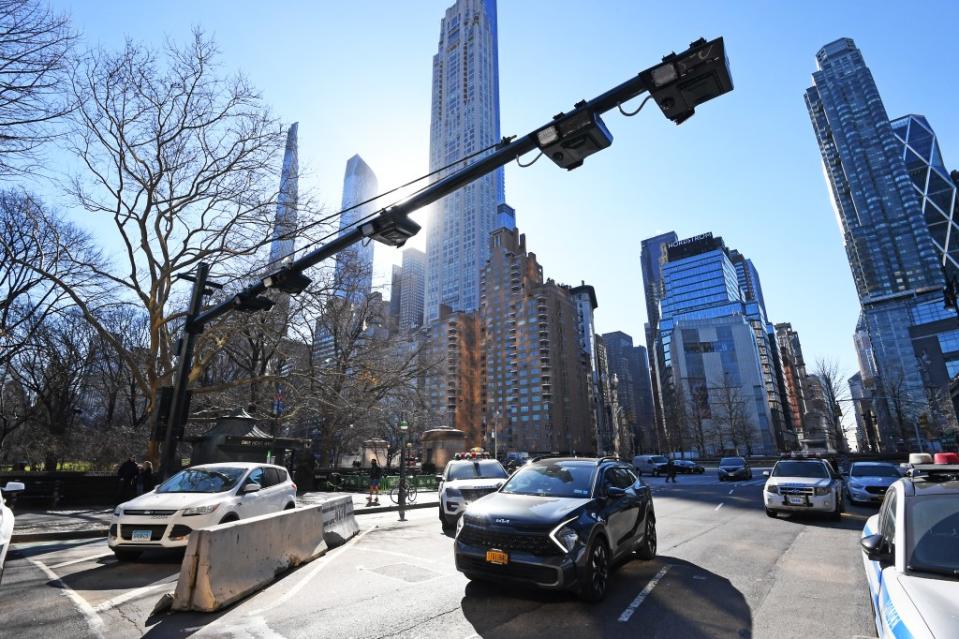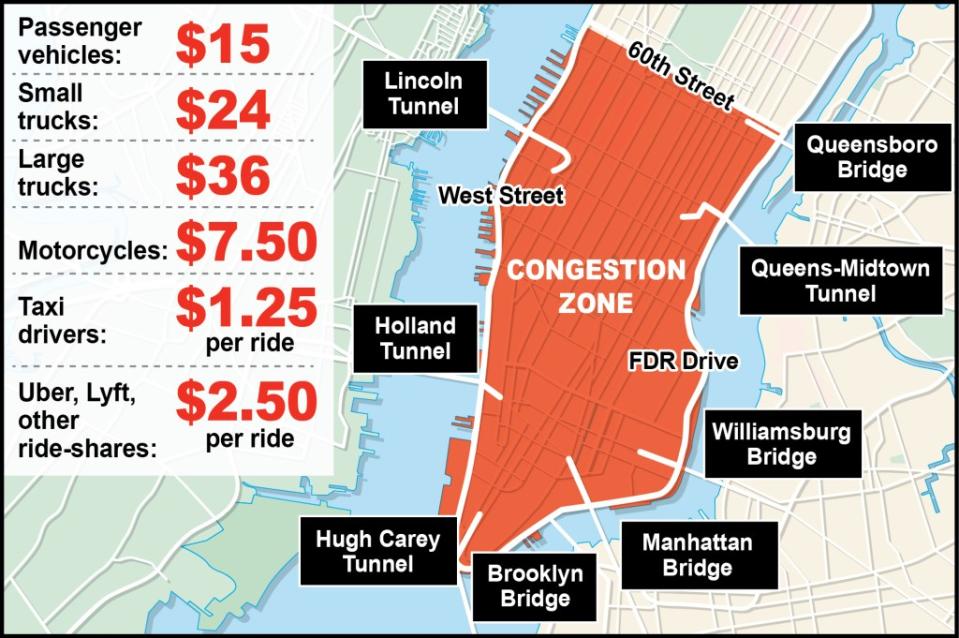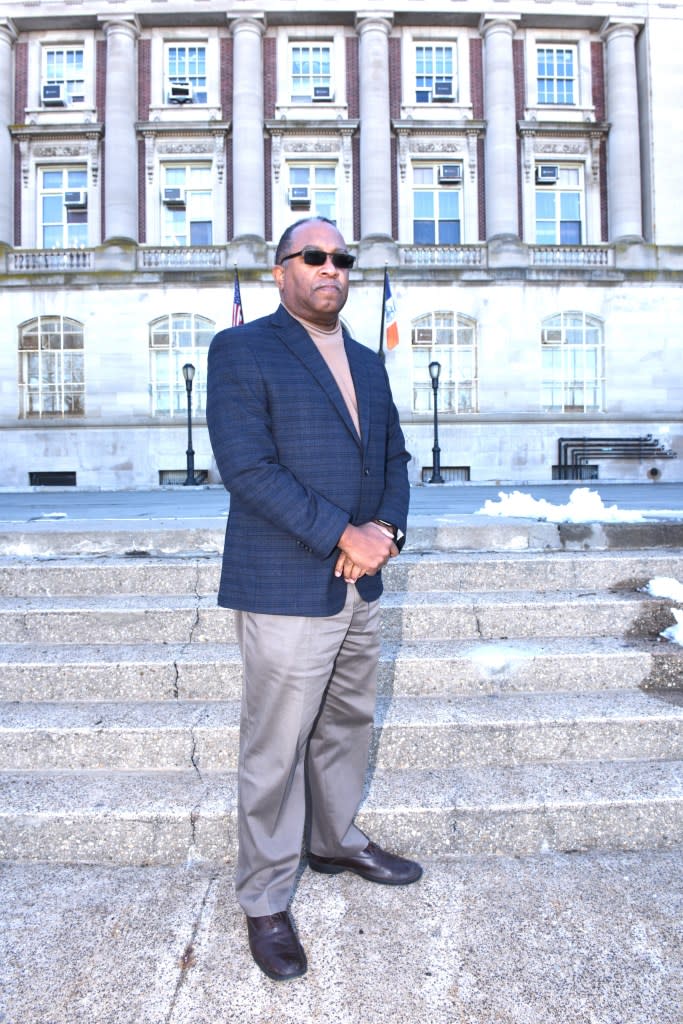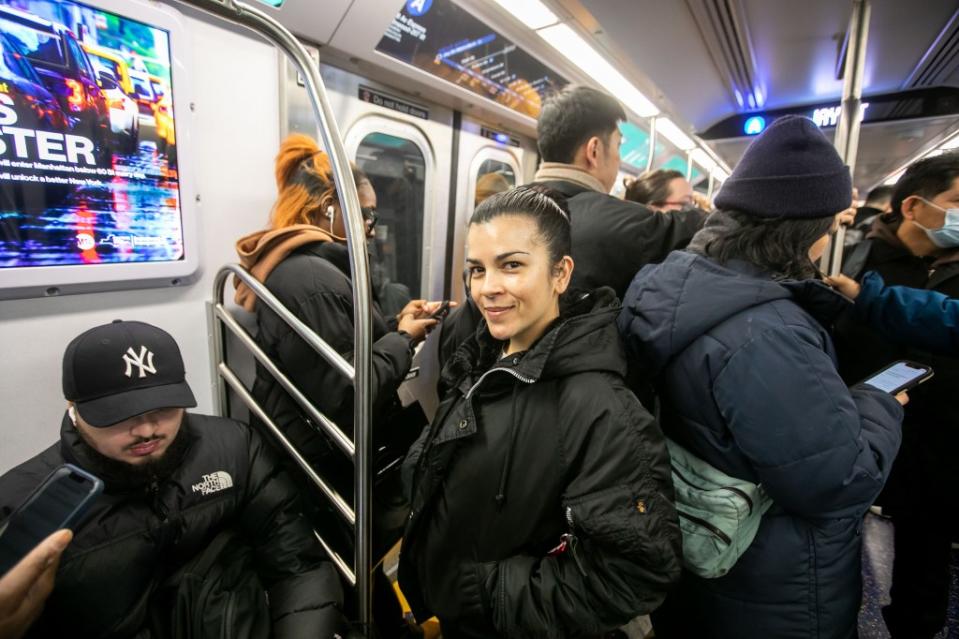NYers sound off on $15 congestion pricing as MTA opens public hearings: ‘Don’t make a lot of money as it is’

New Yorkers will finally get a chance to speak up about the Empire State’s controversial plan to start charging drivers a $15 congestion toll to enter Midtown Manhattan — with the first public comment hearing set to kick off on Thursday.
Ahead of the hearing, The Post spoke to New Yorkers who will be affected by the new fee, including an FDNY paramedic who said it’s making her consider getting a new gig and a police officer who called for law enforcement to be granted exemptions.
Public servants just like them will likely be among those who show at 6 p.m., when the Metropolitan Transportation Authority will open up the floor to drivers and commuters so they can weigh in on the proposed congestion pricing rates.

It’ll be the first of of four hearings to be held in the coming weeks at MTA HQ in lower Manhattan ahead of the congestion toll’s rollout, which has been slated for mid-June following years of delays.
The proposal — which transit officials say will raise $1 billion a year for system upgrades — is facing a flurry of lawsuits, including from the labor coalition representing New York City’s nearly 400,000 government workers, such as uniformed cops, firefighters and other first responders.
Here’s what some of the Big Apple’s residents and essential workers had to say about the looming toll:
The FDNY paramedic: ‘I’m debating another job‘
Even though Sondra Luzzicone loves her job helping to save lives as an FDNY paramedic, the 31-year-old said the push to hit drivers with a $15 toll to enter Manhattan south of 60th Street was enough to make her consider a new career.
“I’m definitely debating getting another job,” the mom-of-two said.
Luzzicone, who drives daily from Staten Island to the FDNY EMS ambulance station in Chelsea where she works, said a toll exemption was needed for some drivers — especially emergency workers like herself.

“We need a discount from the congestion toll,” Luzzicone said of EMS workers. “Something’s got to give. We don’t make a lot of money as it is.”
Under the congestion pricing plan, cars would be hit with a once-a-day $15 toll on weekdays between 5 a.m. and 9 p.m. and 9 a.m. and 9 p.m. on the weekends. Outside those peak hours, the toll would be $3.75.
Luzzicone’s daily commute falls into the peak-category given she usually covers an 8.45 a.m. to 5.30 p.m. shift at her $50,000-a-year job.
“I’m surprised everyone has to pay the toll. It’s a lot of money,” she said.
While the toll hasn’t yet been put in place, the paramedic said the fear of it had caused a number of fellow ambulance workers to request transfers just so they don’t have to pay it.
“It’s going to hit everyone at the station. People have been transferring out like crazy,” Luzzicone said.
“You try to do good for the community,” she added. “You call 911, I’m the one who shows up.”
An NYPD cop: ‘Give us an exemption’
NYPD officer Lerone Davis, too, thinks a toll exemption is needed for law enforcement — especially given how inflexible their shift patterns can be.
“As law enforcement, we’re expected to show up whether it’s rain, shine, rain, hail. We’re expected to do things that’s not really expected for those doing a regular 9-5 [job],” he said.
“I think there is opportunity there to give us an exemption.”
The veteran cop, who has been in the NYPD ranks for 16 years, said it isn’t reasonable for officers to solely rely on public transport for their daily commutes — because there’s no telling what each day will bring.

Typically, Davis will commute from East Flatbush to Midtown for a 7 a.m. to 3.30 p.m. day shift. Then, he’ll venture back in for an 11 p.m. to 7 a.m. overnight shift when scheduled.
“As a police officer, there’s a lot of inconsistencies, which change your tour. Or something happens and you have to stay,” he said.
“There’s an incident in the afternoon and now I’m having to take the train at 1-2 in the morning after working 15-17 hours,” Davis continued. “I’ve had issues where I leave at 12-1 a.m. and I don’t get home until 3 a.m. … Meanwhile, I came into work at 7 a.m.”
He noted that he can get to his station in roughly 30 minutes via the Midtown tunnel, but the subway can take up to an hour.
“I’m trying to get used to taking the train more often now,” he said, adding that the proposed toll is “gonna cause a big damper on my finances.”
The veteran cop said he’d have some choice words for MTA CEO Janno Lieber about the looming toll if he got the chance to front him up.
“Try to walk in our shoes for a week, just to see the inconsistencies with our schedules and the different things we have to do to make our lives work … And add on the stress and the added funds out of your pockets,” David said he’d tell the transit boss.
“It’s almost a punishment for wanting to do the right thing by showing up to work.”
Staten Island teacher: The ferry will be overrun
Troy McGhie, a veteran Staten Island teacher, fears his borough’s infrastructure will become crippled because of the toll.
“Anybody who’s going into Lower Manhattan, coming in from New Jersey or whatever, is going to come into Staten Island to take the ferry, which is free,” McGhie, who is a special education dean at Curtis High School, warned.
“What’s gonna happen is these people are going to come and try and take the ferry. And they’re gonna park – so the parking spaces that would be for the residents, for the people coming to work in this area; they’re going to be pushed out.”
The potential surge in vehicle traffic from those trying to take the free ferry will only cause more pollution, McGhie argued — which the congestion plan, in part, aims to reduce.

“We’re going to get a lot more traffic on Staten Island which our infrastructure is not going to be able to handle,” he said. “That’s going to cause a lot more pollution.”
“Environmentally, I don’t think this is the best move for the North Shore of Staten Island and I think they need to reassess that.”
“I want to see an in-depth study, an impact study that’s gonna tell us what this is going to look like for us on the North Shore of Staten Island,” he added.
An environmental review already conducted by the MTA as part of the planning process has estimated traffic on Staten Island could increase by 2 to 3% with the congestion toll.
Straphangers approve of potential subway improvements
One of the MTA’s main pro-toll arguments is that it will rake in $1 billion per year, which would be used to fund $15 billion in bonds to pay for major upgrades to subway, commuter railroads and bus systems.
Transit officials want to set aside $2.3 billion of that congestion toll money to buy hundreds of new train cars as part those improvements.

A handful of straphangers stressed they’d like to see any cash raised from the congestion pricing toll be put towards preventing delays — and not just fancy new train cars.
“I don’t think a shiny new train makes really that big of a difference,” one commuter, only identified as Brooks, told The Post.
“I think if that would help people to have better frequency of trains and less delays and more safety, I don’t have a problem with it.”

It comes after the MTA recently rolled out a new European-style train with an “open gangway” style-design on the C-line.
Brooks, a project manager who takes the train regularly from Washington Heights to Columbus Circle, admitted the new C-line cars were “nicer looking” with their digital screens and lights, but “if you live here then you don’t really need that too much. It doesn’t really make an impact.”
Other passengers, meanwhile, were excited about the congestion toll potentially improving subways.
“I guess it’s a good thing. I mean, we do need more updated trains,” Grace Tavares, 27, who rides the A-line train daily, said.
“I think it’s perfect. I think that’s the right thing to do,” Yamie Arias, 41, who takes the subway regularly from Brooklyn’s Ozone Park into Manhattan, added.

 Yahoo News
Yahoo News 
